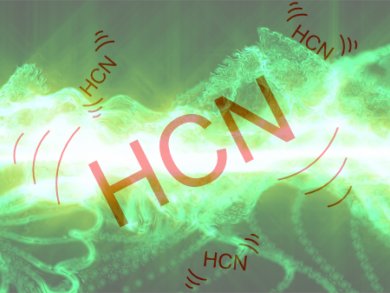Vibrational energy flow into reactants and out of products plays a key role in chemical reactivity. Molecular dynamics simulations by UK chemists show how the reaction between cyanide, CN, and cyclohexane in dichloromethane generates vibrationally “hot” HCN. This violates conventional linear response theory but the simulations match experimental measurements and show the HCN relaxing on different timescales. They also reveal the intermediate co-product and the nature of solvent caging of the reaction components, all critical aspects of engineering more efficient reactions.
- Ultrafast energy flow in the wake of solution-phase bimolecular reactions
D. R. Glowacki, R. A. Rose, S. J. Greaves, A. J. Orr-Ewing, J. N. Harvey,
Nature Chem. 2011.
DOI: 10.1038/nchem.1154




